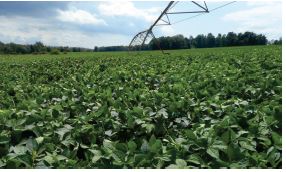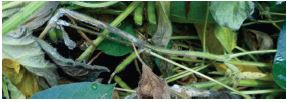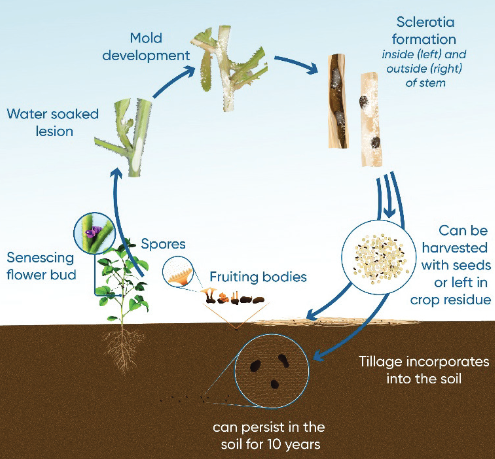Variety Selection
- No variety is completely resistant to white mould, particularly under severe disease pressure, but differences in tolerance exist among varieties.
- Pioneer®brand soybean varieties are rated on a scale of 1 to 9 (9 = most tolerant) for genetic tolerance to white mould.
- Ratings are determined by analyzing data from multiple locations and evaluating infection development rate as well as the extent of damage caused by the pathogen.
- Selecting varieties with high tolerance ratings is a good management practice in locations that often encounter white mould. Consult your Pioneer sales professional for help selecting suitable varieties for your farm.
Production Practices
- Early planting, narrow row width and high plant populations encourage early canopy formation and white mould risk. These practices also increase yield.
- Abandoning practices that increase yield most years to reduce white mould (which does not occur every year) may not be a favorable economic trade-off.

Figure 5 – High density canopies with cool and moist conditions favor disease development. Photo courtesy of Madeline Henrickson, Agronomy Sciences Intern.
Crop Rotation
- Sclerotinia sclerotiorum has a wide host range including alfalfa, clover, sunflower, canola, edible beans, and more.
- Non-host crops that can be utilized in a rotation include corn, sorghum, and small grains.
- Because sclerotia persist in the soil for up to ten years, rotation is only a partial solution for reducing disease pressure. More than one year away from soybeans may be required to see a benefit.
Weed Management
- Weeds are also alternate hosts for white mould in fields.
- Lambsquarters, ragweed, pigweed, and velvetleaf are some common weeds that can be infected by Sclerotinia sclerotiorum.

Figure 6 - Soybeans that have lodged due to loss of structural integrity as a result of white mould infection. Photo courtesy of Madeline Henrickson, Agronomy Sciences Intern.
Tillage
- Sclerotia germinate from the top two inches of soil, but can persist at lower depths for up to ten years.
- Buried sclerotia can be resurfaced by tillage and germinate.
- If a severe outbreak has occurred in a field that is new to white mould, deep tillage followed by zero tillage in subsequent season may help.
Fungicide Treatments
- Fields that are at high risk of white mould infestation may benefit from foliar treatments used in tandem with cultural practices that disfavor the pathogen.
- Products labeled for white mould control or suppression:
Foliar Fungicide Application Timing
- Applications must be made prior to infection because they have little activity on the established pathogen.
- Optimum application timing for fungicides for white mould control in soybeans is approximately the R1 growth stage when blooms are vulnerable to the initial infection and canopies are still open.
- Soybean susceptibility for white mould lasts as long as the crop is flowering, often 30 days or more, so a second application may be necessary if environmental conditions favorable to infection persist into mid-summer.
- Later fungicide applications have the potential for reduced canopy penetration, particularly in narrow-row soybeans, which can reduce their effectiveness.
- Always read and follow all label directions and precautions for use when applying fungicides.
Wessel, J, S. Butzen, and M. Jeschke. 2017. Integrated Management of White Mould in Soybean Production. Pioneer Crop Insights Vol. 27 No. 12.













